Has your phone ever been soaked from rain or falling into water? I’m asking because I accidentally spilled water on my phone, and the charging port got wet. Even if I acted quickly, water has definitely made its way into my phone’s charging port.
So how to get water out of charging port? With this handy guide, I was able to get the water out and saved the day (at least for my phone)!
How to Get Water Out of Your Charging Port
There are a number of internet-based solutions for drying out a charging port, but many of them could actually do more harm than good. A charging port is a sensitive area full of electronic components, and subjecting it to high heat or strong chemicals could damage your phone beyond repair.
If it’s a minor hiccup, the best way to get water out of a charging port is simply to use gravity. First, tilt your phone at an angle and shake it gently until the water drips out. Then, use a soft cloth to remove any excess water from the external surface.
Here are a few more tried and tested ways how to get water out of charging port.
Pro Tip:
When a phone is water-damaged, you should turn it off immediately and remove the battery, if possible. This will help to prevent any further damage from occurring. For iPhones, this is as simple as removing the back panel and popping out the battery. For Android phones, you may need to use a small screwdriver to remove the back panel and access the battery.
#1. Expose to Natural Air and Sunlight
If gravity is of no help, let the natural air and heat do their thing. The best way to get water out of charging port is to expose it to air and sunlight. This will help to evaporate any remaining water. Simply leave your phone in a sunny spot for a few hours.
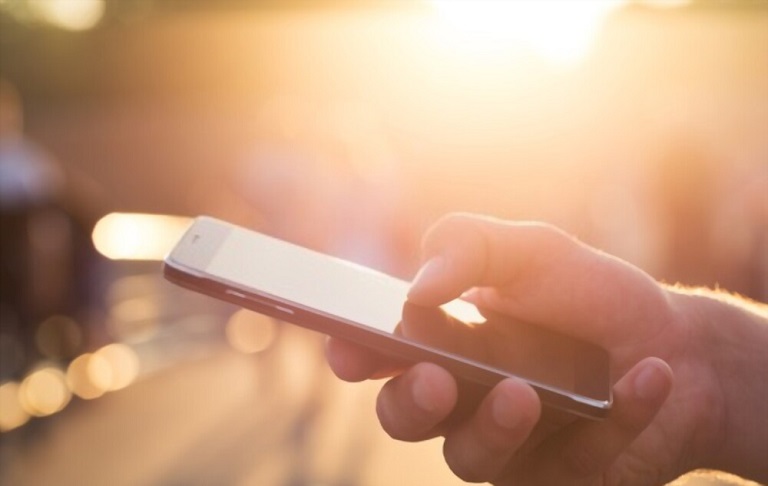
Water content can also be reduced with the aid of sunlight. However, one must exercise caution when trying this technique, as extended exposure to sunlight might permanently damage your phone’s screen and microcircuit board.
Yes, I did this but I didn’t really leave my phone for extended hours under the sun because I also didn’t want it to overheat.
#2. Use a Vacuum Cleaner/Hair Dryer
Once you’ve removed the battery (if possible), it’s time to start sucking out that water!
Using a vacuum cleaner with the hose attachment, place the vacuum tip over the charging port and turn on the vacuum at the lowest settings.
The suction will pull out any water that’s lodged in there. Again, the vacuum’s suction power must be managed with care to avoid damaging the phone’s other features.
If you are using a hairdryer, switch to the “Cool” setting and blow at a slower pace in the direction of the slightly inclined phone. Dryers without a “cool” setting should not be used on your phone since the heat could damage its internal components.
#3. Use Rice
If you’re still struggling to get water out of charging port, then it’s time to bust out the rice. That’s right—uncooked rice can actually help to absorb moisture!
Simply place your phone (battery still removed) in a bowl or container of rice and leave it for 24-48 hours. The rice will help to draw out any remaining moisture from your phone. The success of this strategy has been questioned by those who think it is based purely on chance.
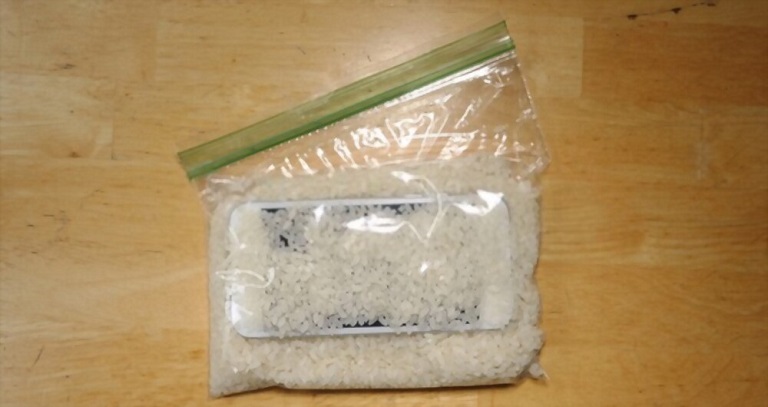
This approach could be highly controversial, but it would still be considered a do-it-yourself option for correcting water damage on mobile devices. This rice method isn’t limited to fixing charging port issues; it can also be used to get rid of moisture from inside the camera lens.
I’ve heard this method and it’s definitely something risky for me, so you should consider doing this as the very last resort!
#4. Introducing Silica Gel
Instead of rice, silica gel is another option for absorbing excess moisture. Silica Gel is a good wicker of wetness and helps you to easily get water out of charging port. It comes in little packets and can be found in many retail packagings, such as bags and shoe boxes.
Your bags, clothes, shoes, etc., will be safe from humidity-related damage thanks to these little gel packets. Silica, for the record, is a unique adsorbent that soaks up moisture and helps maintain extremely low humidity levels.
Put the phone and the silica packets in a dish and cover them tightly. The gel will absorb the moisture from your device over the course of a few days. Depending on the state of your device, the wait time is usually short and shouldn’t be more than three days at the very most.
What NOT to Do
More than knowing what to do, it’s essential to know what NOT to do in a situation where you are handling a sensitive device. Some approaches may appear reasonable or have a reputation for success, but they could really cause more issues than they address. Here is what you need to know:
- Keep away from high temperature – In spite of the fact that most modern electronics can withstand some heat, the display, the battery, and the seals are all more vulnerable to high temperatures. Keep in mind that using a hair dryer in a heat setting or oven to dry water in the port can cause permanent harm to the port and the device’s internal components.
- Don’t insert anything into the port – Cotton swabs, paper towels, tissues, and anything else that can be squeezed in are all fair game. Do not force anything into the charging port; doing so can either cause fragments to be left behind or break the connecting points in the port.
- Isopropyl alcohol is a big NO – Because isopropyl alcohol is typically mixed with water, you would be adding even more moisture to the apparatus. Isopropyl alcohol is highly conductive, so it can carry away any stray electrical charges generated by the gadget.
- Don’t keep the SIM intact – It is essential to remove all delicate elements like the SIM card, memory card, and battery. SIM cards contain incredibly delicate circuitry; even a small amount of water can damage them.
- Don’t charge your phone – Even if you feel that the damage is not to a major extent. It is still advisable to switch off your mobile phone and not charge it for at least a few hours, as the remaining water droplets might cause further damage.
- Don’t rush it – Rushing the process of drying out your gadget can lead to serious complications. If you’re in a hurry, then you might make some rookie mistakes that could cause even more damage. Just be patient and take your time!
Depending on your phone, but many phone models do have a notification to warn you not to charge your phone just yet. I tried charging my phone and it notified me of this, and that’s how I discovered my charging port has been soaked in the first place. So do not ignore this warning.
Sources Where Water Gets Into Charging Port
It’s always to keep safe than to be sorry, so it would be best to avoid any water contact with your device. But as we all know, accidents happen, so it’s good to know where the water might come from:
#1. Rain
Rain can penetrate your gadget in more ways than just by direct exposure. If your device is in a pocket or purse and the purse gets wet, for instance, moisture will find its way inside your device. Moreover, water can enter a port via headphones or other wired devices if the rain slides down the line.
For my experience, I was soaked with rain and didn’t know that my phone got wet too. And again, when I tried charging it, it didn’t let me because apparently, water got into the charging port.
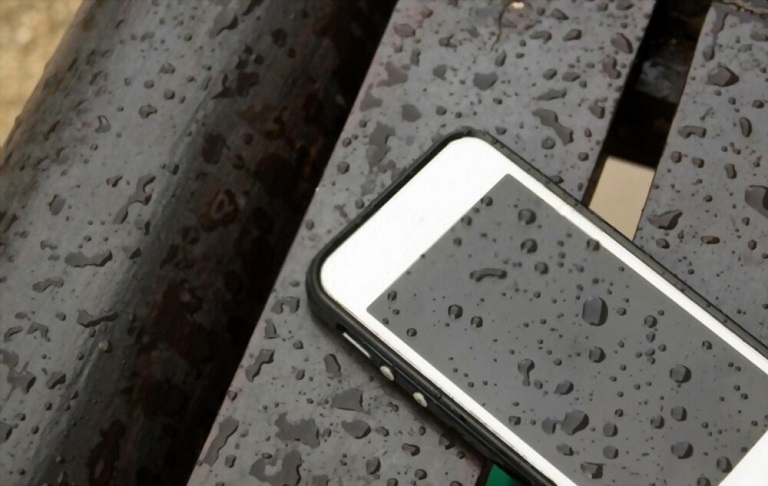
Prevention – If you know that rain is in the forecast, consider leaving your device at home. If that’s not possible, then be sure to tuck it away in a bag or other waterproof container. While some dry bags can hold a lot of gear, some are made specifically for smaller items like smartphones. The trusty old zip-lock bag is always a good choice for keeping things dry.
#2. Splashes
Coming in contact with water is one thing, but if water gets splashed on your device, then that increases the likelihood of moisture entering the charging port.
Prevention – If you’re going to be near water, such as at the beach or pool, then consider using a waterproof case for your device. Always maintain a distance of a minimum of 6ft to keep your device safe from any mishaps.
#3. Drinks
Accidentally spilling a drink on your device is one of the most common ways that water enters the charging port.
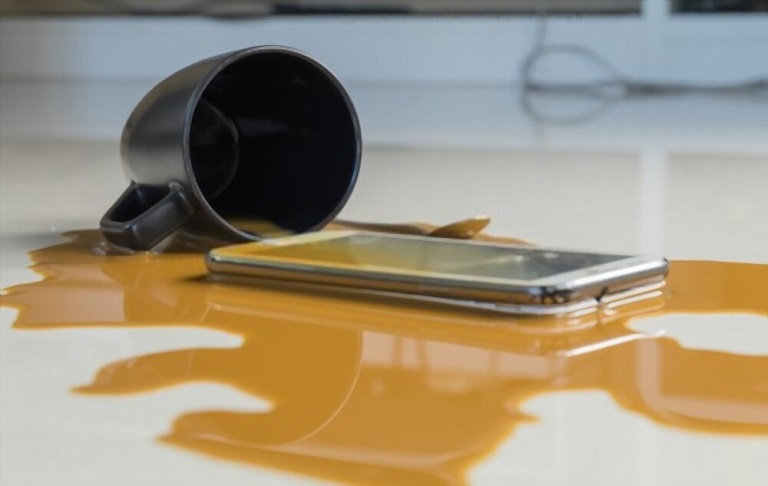
Prevention – Keep your drink away from your device, and if you do spill something, take care of it immediately. To prevent water from penetrating and damaging your device, a waterproof case will have a tight seal around all ports and apertures, including the charging port.
I make it a point to not put my phone near any drinks, mine or someone else’s, because accidents do happen and I don’t want them to cost me my phone.
#4. Condensation
If you live in a humid climate or if you take your device from a cold environment into a warm one, then condensation can form on the surface of your device. This moisture can work its way into the charging port.
Prevention – If you know that condensation is likely to form, then try to keep your device in a cool, dry place.
#5. Showering
The majority of people keep their phones close to them in the shower. It could be due to a habit of regularly checking your phone, or it could just be that you want to listen to music. Shower water might sneak inside your phone and may damage it.
Prevention – It’s best to avoid using your phone in the shower altogether. If you must, then consider using a waterproof case or keeping it in a sealable bag.
I know a lot of people who watch shows or listen to music while showering, myself included, so I definitely put my phone inside a waterproof pouch and get my dose of entertainment!
#6. Dew
If you leave your device outside overnight, then dew can form on the surface and seep into the charging port.
Prevention – Bring your device inside overnight or put it in a waterproof container.
#7. Snow
Just like rain, if you’re caught in a snowstorm, and your phone is somewhere in your pocket or purse, then there’s a chance that some water could get into the charging port.
Prevention – If you know that you’ll be in a snowy situation, then consider leaving your device at home. If that’s not possible, then put it in a waterproof container.
#8. Sweat
Believe it or not, sweat can actually be one of the most corrosive substances for electronic devices. So if you’re out on the run and your device is in your pocket, then there’s a chance that sweat could seep into the charging port.
Prevention – If you’re going to be sweating, then consider using a waterproof case or keeping your device in a dry place. The ports on most waterproof cases are accessible via a rubber plug that can be opened and closed. For best efficiency, always ensure that these rubber stoppers are fully closed when exercising.
Water Resistance Rating
Many modern electronic devices, including phones, are made to be resistant to water or even waterproof. The International Electrotechnical Commission (IEC) created the ingress protection (IP) rating system to “rate the resistance of an enclosure against the incursion of dust and liquids” in order to establish a device’s water protection capacity.
IP Ratings
An IP rating usually comprises two numbers, with the first number indicating the device’s level of resistance against solids and the second number indicating the level of protection against liquids. The level of protection increases as the number rises.
IP67 – The “6” in IP67 means that the device is completely sealed against dust. The “7” means that there will be no damage if the device is submerged for up to 30 minutes in water up to 1 meter deep (3.3 ft).
IP68 – The “8” in IP68 means that the device can be submerged in water beyond 1 meter (3.3 feet). The exact depth and time will depend on the manufacturer, but it’s typically greater than IP67.
Frequently Asked Questions

How Do You Get the Moisture Out of a Charging Port?
The best way to remove moisture from a charging port is by using compressed air. You can also use a vacuum cleaner with the hose attachment, but be sure not to put the vacuum cleaner too close to the charging port, or you could damage the device.
Will the Water in My Charging Port Go Away?
Yes, the water will eventually evaporate on its own. However, it’s best to remove the moisture as soon as possible to prevent any damage to your device.
How Can I Dry My Charging Port Faster?
One way to quicken the drying process is to use a hair dryer in the lowest setting or cold setting. You can also use compressed air from a vacuum cleaner with a hose attachment with proper precautions.
How Long Does It Take for a Charging Port to Dry?
It usually takes about 24 hours for a charging port to dry out completely. However, this will vary depending on the humidity and temperature of your environment as well as the manufacturer.
I, for one, got water into my phone’s port one evening, and I just had a good night’s sleep and when I woke up, phone is dried and can be charged already!
Can I Dry My Phone With a Hair Dryer?
Yes, it is possible to use a hair dryer in a cold setting to help speed up the drying process. Just be sure not to put the hair dryer too close to the device, or you could damage it.
Why Won’t the Moisture Detected Won’t Go Away?
If the moisture is still detected after 24 hours, then there might be something else wrong with your device. Try taking it to a repair shop to have it checked out.
Conclusion
Water and phones don’t mix! But if you find yourself in such a predicament, don’t despair—there are ways to get that water out of your charging port so you can carry on using your phone like normal. Just follow these four easy steps and have your phone dry and working again in no time.
Once you get water out of charging port and your phone is dried, reassemble it and turn it on as you normally would. If it powers on and seems to be working properly, then congratulations! You’ve successfully repaired your water-damaged phone.

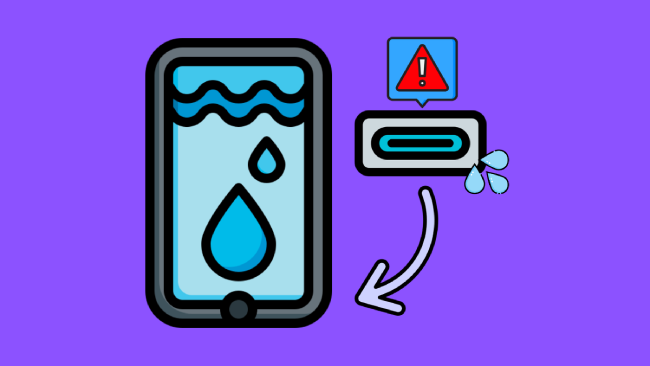
Leave a comment
Have something to say about this article? Add your comment and start the discussion.